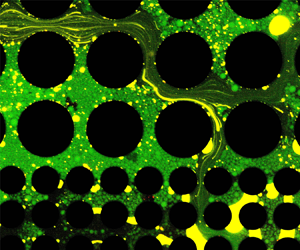Crossref Citations
This article has been cited by the following publications. This list is generated based on data provided by
Crossref.
Mejia, Lucas
Mejia, Miguel
Xie, Chiyu
Du, Yujing
Sultan, Abdullah
Mohanty, Kishore K.
and
Balhoff, Matthew T.
2021.
Viscous Fingering of Irreducible Water During Favorable Viscosity Two-Phase Displacements.
Advances in Water Resources,
Vol. 153,
Issue. ,
p.
103943.
Zheng, Jiangtao
Lei, Wenhai
Ju, Yang
and
Wang, Moran
2021.
Investigation of Spontaneous Imbibition Behavior in a 3D Pore Space Under Reservoir Condition by Lattice Boltzmann Method.
Journal of Geophysical Research: Solid Earth,
Vol. 126,
Issue. 6,
Song, Hongqing
Zhu, Jingwei
Wei, Chenji
Wang, Jiulong
Du, Shuyi
and
Xie, Chiyu
2022.
Data-driven physics-informed interpolation evolution combining historical-predicted knowledge for remaining oil distribution prediction.
Journal of Petroleum Science and Engineering,
Vol. 217,
Issue. ,
p.
110795.
Lei, Wenhai
Lu, Xukang
Wu, Tianjiang
Yang, Haien
and
Wang, Moran
2022.
High-performance displacement by microgel-in-oil suspension in heterogeneous porous media: Microscale visualization and quantification.
Journal of Colloid and Interface Science,
Vol. 627,
Issue. ,
p.
848.
Liu, Yang
Gong, Wenbo
Zhao, Yu
Jin, Xu
and
Wang, Moran
2022.
A Pore‐Throat Segmentation Method Based on Local Hydraulic Resistance Equivalence for Pore‐Network Modeling.
Water Resources Research,
Vol. 58,
Issue. 12,
Lei, Wenhai
Li, Qiangqiang
Yang, Hai-En
Wu, Tian-Jiang
Wei, Jiong
and
Wang, Moran
2022.
Preferential flow control in heterogeneous porous media by concentration-manipulated rheology of microgel particle suspension.
Journal of Petroleum Science and Engineering,
Vol. 212,
Issue. ,
p.
110275.
Li, Sheng
Liu, Haihu
Wu, Rui
Cai, Jianchao
Xi, Guang
and
Jiang, Fei
2022.
Prediction of spontaneous imbibition with gravity in porous media micromodels.
Journal of Fluid Mechanics,
Vol. 952,
Issue. ,
Gong, Wenbo
and
Liu, Jinhui
2022.
Effect of Wettability Heterogeneity on Water-Gas Two-Phase Displacement Behavior in a Complex Pore Structure by Phase-Field Model.
Energies,
Vol. 15,
Issue. 20,
p.
7658.
Yang, Hongen
Lao, Junming
Tong, Delin
and
Song, Hongqing
2022.
Numerical Investigation on EOR in Porous Media by Cyclic Water Injection with Vibration Frequency.
Water,
Vol. 14,
Issue. 23,
p.
3961.
Liu, Yan
2022.
Establishment of Soil Preferential Flow Model based on Modern Remote Sensor Observation Methods.
p.
899.
Lei, Wenhai
Lu, Xukang
Liu, Fanli
and
Wang, Moran
2022.
Non-monotonic wettability effects on displacement in heterogeneous porous media.
Journal of Fluid Mechanics,
Vol. 942,
Issue. ,
Wu, Tianjiang
Zhao, Yanhong
Zhang, Yichi
Li, Zhixiao
and
Su, Junwei
2023.
Matching method between nanoparticle displacement agent size and pore throat in low permeability reservoir.
Frontiers in Chemistry,
Vol. 11,
Issue. ,
Cha, Luming
Feng, Qihong
Wang, Sen
Xu, Shiqian
and
Xie, Chiyu
2023.
Pore-Scale Modeling of Immiscible Displacement In Porous Media: The Effects of Dual Wettability.
SPE Journal,
Vol. 28,
Issue. 01,
p.
239.
Wang, Xiaopu
Ren, Lingling
Long, Tao
Geng, Chunxiang
and
Tian, Xinyi
2023.
Migration and remediation of organic liquid pollutants in porous soils and sedimentary rocks: a review.
Environmental Chemistry Letters,
Vol. 21,
Issue. 1,
p.
479.
Dzanic, V.
From, C. S.
Wang, Z.
Gupta, A.
Xie, C.
and
Sauret, E.
2023.
Mobilization of trapped oil droplet in porous media through viscoelasticity.
Physics of Fluids,
Vol. 35,
Issue. 9,
2023.
The pinning dynamics of a non-wetting droplet penetrating a permeable substrate.
Physics of Fluids,
Vol. 35,
Issue. 6,
Daripa, Prabir
and
Mishra, Rohit
2023.
Modeling shear thinning polymer flooding using a dynamic viscosity model.
Physics of Fluids,
Vol. 35,
Issue. 4,
Lei, Wenhai
Lu, Xukang
and
Wang, Moran
2023.
Multiphase displacement manipulated by micro/nanoparticle suspensions in porous media via microfluidic experiments: From interface science to multiphase flow patterns.
Advances in Colloid and Interface Science,
Vol. 311,
Issue. ,
p.
102826.
Huang, Chuanqing
Zhang, Jiaosheng
Lu, Xuejiao
Jihong, Li
Huang, Yingsong
Liu, Lijie
Su, Yajie
Bai, Jianguang
and
Li, Wenhui
2023.
Pore-Scale Simulation of Water Flooding Using Volume of Fluid Method.
Geofluids,
Vol. 2023,
Issue. ,
p.
1.
Shao, Lihua
Lin, Ping
Zhu, Jingwei
Zhou, Yiyang
and
Xie, Chiyu
2023.
Assessing the apparent viscosity of decane-water emulsion in underground porous media based on the lattice Boltzmann method.
Frontiers in Earth Science,
Vol. 10,
Issue. ,



